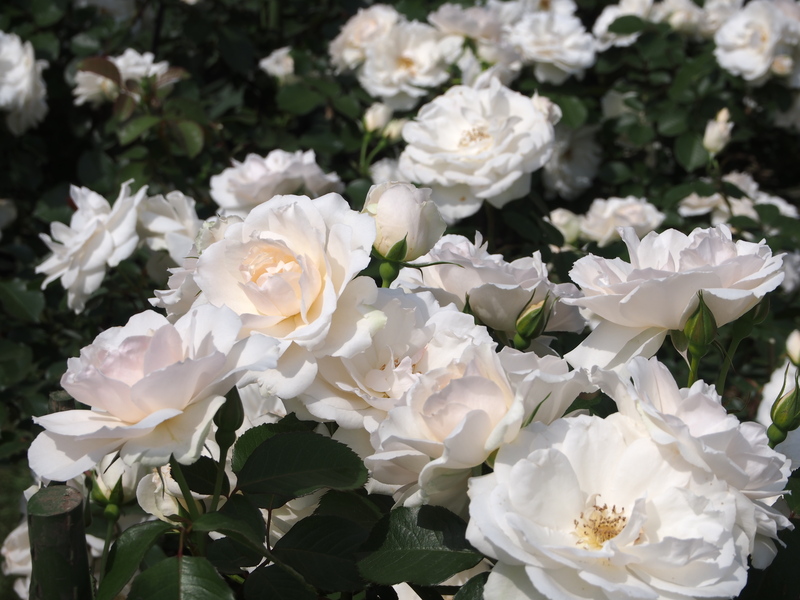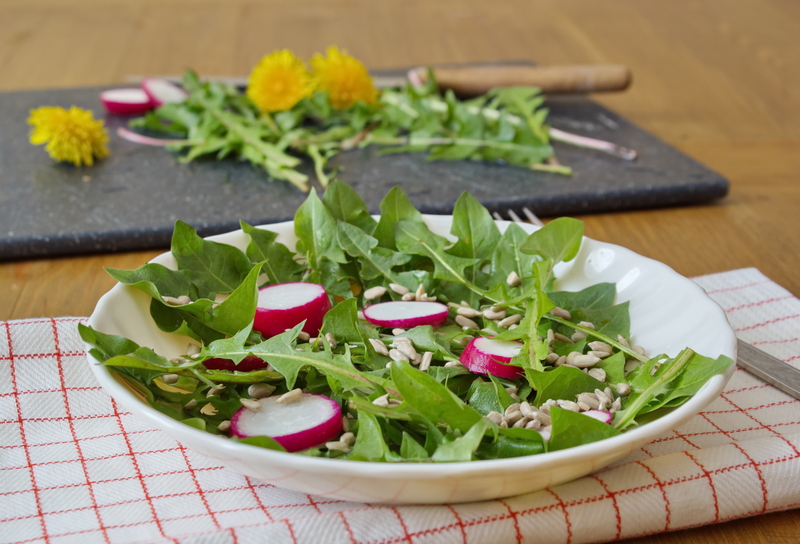Gardening for Dog Lovers: Tips and Tricks
Posted on 24/05/2025
Gardening for Dog Lovers: Tips and Tricks for a Pet-Friendly Yard
Is it possible to maintain a beautiful garden while providing a safe and stimulating environment for your canine companion? Absolutely! Gardening for dog owners doesn't mean sacrificing aesthetics or giving up on your favorite plants. Instead, it's about striking a harmonious balance between lush landscaping and your pup's playful, curious nature. In this comprehensive guide, we'll uncover dog-friendly gardening tips, tricks, and considerations to create the backyard of your dreams--one your furry friend will adore.

Why Gardening with Dogs in Mind Matters
Dogs are notorious explorers, sniffers, and, occasionally, diggers. Traditional garden designs often fail to account for a dog's needs, resulting in damaged plants, patchy lawns, or, worse, health hazards for your beloved pet. Gardening for dog lovers isn't just about protecting your plants--it's a proactive approach to reducing potential dangers and ensuring your pet is safe and happy outdoors.
- Prevent accidental poisoning by avoiding harmful plants
- Protect your landscaping investments
- Reduce stress for both you and your canine companion
- Create a stimulating, fun, and fulfilling outdoor space
Ready to dig in? Let's break down the essential tips for creating the ultimate dog-friendly garden.
1. Choosing Dog-Friendly Plants for Your Garden
Common Plants That Are Safe for Dogs
Certain plants bring life to your garden while being non-toxic to dogs. Consider incorporating these safe choices:
- Sunflowers
- Marigolds
- Roses (without fertilizer or pesticides)
- Snapdragons
- Camellias
- Basil, parsley, and other non-toxic herbs
These plants won't harm your dog if nibbled and boost your garden's appeal with color and fragrance.
Plants to Avoid in a Dog Lover's Garden
Some plants popular in traditional landscapes can be toxic or even deadly to pets. For a safe garden, never plant the following where your pup roams:
- Lilies (all varieties)
- Foxglove
- Oleander
- Azalea
- Sago palm
- Daffodils and tulip bulbs
- Autumn crocus
Be sure to check the full list on the ASPCA Toxic and Non-Toxic Plants List.
Tips for Introducing New Plants
- When adding any new plant, monitor your dog's behavior closely for licking, chewing, or digging.
- Introduce plants gradually, allowing your dog to get used to new scents.
- If you're unsure about a plant's toxicity, consult your veterinarian or local gardening expert first.
2. Creating Pet-Proof Borders and Pathways
Designing Paths for Your Dog's Patrols
Dogs often develop their own routes around the yard, known as "dog runs." Rather than constantly scolding your furry friend or replanting trampled areas, work with them!
- Identify existing paths your dog uses most.
- Create sturdy, dog-friendly pathways with cedar mulch, gravel, or flagstone--these are gentle on paws and durable.
- Use decorative fencing, edging, or low-growing shrubs to guide traffic and protect delicate flowerbeds.
Protecting Vegetable Gardens from Canine Curiosity
- Erect raised beds: This takes tempting plants out of easy reach.
- Use chicken wire or lattice fencing around veggie patches for extra security.
- Install gate latches that are dog-proof--especially for clever breeds.
3. Safe Mulch and Ground Cover Choices for Dog-Friendly Yards
Best Mulch for Dogs
- Cedar mulch: Natural pest repellant and kind to paws.
- Pine needles (in moderation): Soft, and discourage digging somewhat.
- Pea gravel or river rocks: Good for paths and reduces mud, but use larger sizes to prevent swallowing hazards.
What to Avoid
- Cocoa mulch: Highly toxic to dogs--never use it!
- Large wood chips: Can cause injury or choking.
- Artificial turf: Not toxic, but may overheat in summer and can be unpleasant for some dogs.
4. Designating Dig Zones and Avoiding Destruction
It's natural for many dogs to dig--so why not embrace it and contain the chaos?
- Create a dedicated digging area with loose, sand-filled soil in a shaded, cool spot.
- Encourage use by hiding favorite toys or treats in the dig zone.
- Discourage digging elsewhere by using rocks, chicken wire, or dense plants as deterrents.
- Offer plenty of enrichment: A bored dog is a mischievous dog!
Train your dog to use their digging pit with rewards. Consistency is key.
5. Keeping Your Dog Cool and Hydrated in the Garden
Providing Shade and Shelter
- Plant fast-growing shade trees or shrubs
- Set up dog houses, canopies, or strategically placed awnings
- Use pergolas or trellises for extra, attractive shelter
Fresh Water Solutions
- Ensure water bowls are in shaded locations and refreshed daily
- Consider motion-activated dog water fountains for convenience
- Integrate a shallow "splash zone" with a small pond or kiddie pool (monitor for algae and always supervise!)
6. Organic and Dog-Safe Pest Control Methods
Conventional pest control sprays, granules and powders can be hazardous to pets.
- Try natural solutions like neem oil, insecticidal soap, or strong water sprays for pests.
- Encourage beneficial insects such as ladybugs and lacewings.
- Use physical barriers (row covers, netting) to keep bugs off delicate veggies.
- For fleas and ticks, keep grass trimmed and create dry, open areas where parasites can't thrive.
Always wait for sprays to dry before letting your dog out, even with pet-safe products.
7. Stimulating Your Dog with Enrichment Features
Dogs crave mental and physical activity. Transform your landscape into an interactive playground!
- Build tunnels or simple agility obstacles with safe, weatherproof materials
- Add boulders, logs, or sturdy platforms for climbing and jumping
- Incorporate "snuffle gardens" planted with dog-safe herbs like mint, thyme, and basil--great for scent work
- Design scavenger hunt paths to hide healthy treats on walks through the yard
A garden can be so much more than just a visual retreat when you consider your dog's senses and instincts.
8. Handling Dog Urine Spots on Lawns
Why Does Dog Urine Cause Brown Spots?
Your dog's urine contains nitrogen and salts. In small amounts, this actually fertilizes grass, but frequent urination in the same spots leads to "burned" yellow or brown patches. This is a common challenge for gardeners with dogs.
Prevention Tips
- Designate a potty area with gravel, sand, or artificial turf
- Flush the area with water after your dog urinates to dilute the nitrogen
- Train your dog to use different areas if possible
- Seed lawn with urine-resistant grass varieties like fescue or perennial ryegrass
- Feed dog a balanced diet (no excess protein)
Remember, punishing your dog won't help--proactive training and planning are your best bets for a lush, green garden!
9. Fencing Solutions for Dog-Friendly Gardens
Best Types of Fencing
- Solid wood or vinyl fencing: Best for privacy and keeping escape artists at bay.
- Metal or wrought iron fencing: Durable and stylish--just ensure spacing is narrow enough to prevent squeezing through.
- Invisible/electric fences: Use with caution and only as a last resort--some dogs may become fearful or anxious around them.
Always check that your chosen fencing is tall enough for your dog's breed and jumping ability.
Decorative and Functional Barriers
Combine beauty and safety by using:
- Hedges (boxwood, privet, or non-toxic evergreens)
- Trellises with dog-safe vines
- Raised beds as natural borders
10. Seasonal Maintenance: Keeping Your Dog's Garden Safe Year-Round
Spring & Summer
- Double-check for fertilizers or pesticides--only use pet-safe, organic options.
- Watch for new weeds or mushrooms after rain: some are highly toxic if ingested.
- Keep grass trimmed to discourage ticks and fleas.
Fall
- Rake leaves regularly--wet piles can harbor molds or hidden hazards.
- Avoid acorns, which are toxic to dogs if chewed or swallowed.
Winter
- Clear snow and ice from paths to prevent slipping and paw injuries.
- Use pet-safe ice melt and avoid road salt, which can cause burns and digestive distress if licked from paws.

Gardening for Dog Owners: Frequently Asked Questions
Can I have a vegetable garden if I have a dog?
Yes! Use raised beds, fencing, and dog-safe organic practices to protect your produce. Many dogs can coexist peacefully with vegetables when properly trained.
How do I stop my dog from eating my plants?
- Choose non-toxic varieties
- Supervise time in the garden and use positive reinforcement for ignoring plants
- Use deterrents (citrus peels, bitter sprays) but always check for safety
Are there any dog breeds that are better suited to gardens?
Every breed can enjoy a well-designed dog-friendly garden. Herding dogs, retrievers, and terriers may require more stimulation and boundaries. Older or less active breeds will appreciate shaded, quieter spaces. Tailor your garden to your dog's energy, size, and preferences.
Final Thoughts: A Win-Win for Dog Lovers and Gardeners
Gardening for dog lovers is about creating an outdoor retreat that brings joy to both you and your four-legged friend. With a little planning--like choosing pet-safe plants, setting up secure enclosures, and creating enrichment zones--you can enjoy a thriving landscape free from worry.
Remember: Your dog is a part of the family, and your garden is their playground! By making smart, thoughtful design choices, you create a backyard that's safe, beautiful, and full of happy memories. So grab your gloves, call your canine, and start planting the seeds for a harmonious, dog-friendly haven today!
Ready for more pet-friendly gardening tips and tricks? Bookmark this guide and share it with the dog lovers in your life!

